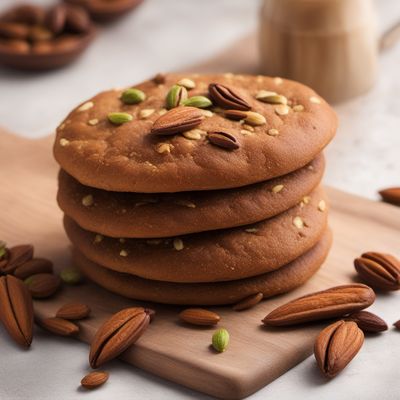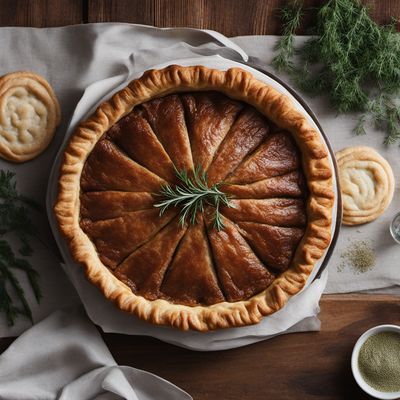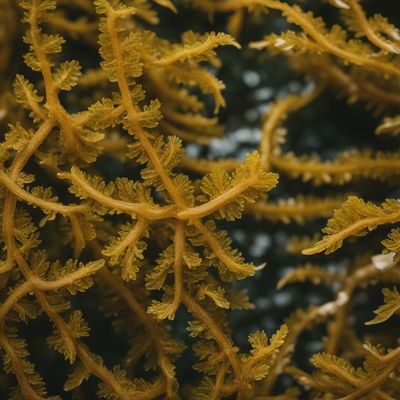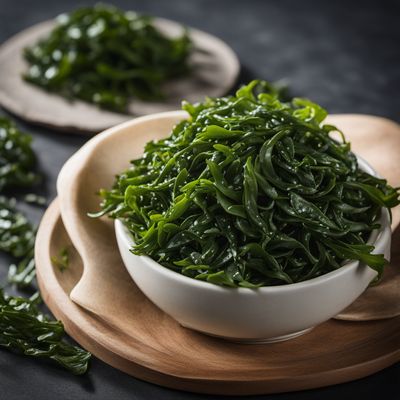
Ingredient
Brown algae
The Ocean's Nutritional Treasure: Exploring the Wonders of Brown Algae
Brown algae is characterized by its long, ribbon-like fronds and brownish color. It has a firm yet tender texture and imparts a rich umami flavor to dishes. Brown algae can be consumed fresh, dried, or used as a seasoning in various culinary preparations.
Origins and history
Brown algae has a long history of culinary and medicinal use in coastal regions around the world. It has been a vital part of traditional Asian cuisines, particularly in Japan, China, and Korea, where it is used in soups, salads, and sushi. Brown algae's abundance in coastal areas has made it an accessible and sustainable food source for many communities.
Nutritional information
Brown algae is a nutritional powerhouse, rich in essential minerals such as iodine, calcium, potassium, and magnesium. It is also a good source of vitamins, antioxidants, and dietary fiber. Brown algae's high iodine content makes it beneficial for thyroid health.
Allergens
Individuals with iodine allergies or sensitivities should avoid consuming brown algae, as it naturally contains high levels of iodine.
How to select
When selecting brown algae, look for fresh or dried varieties that are free from discoloration, mold, or strong odors. Opt for sustainably harvested options whenever possible to support responsible sourcing practices.
Storage recommendations
To maintain the freshness of brown algae, store it in a cool, dry place away from direct sunlight. If using fresh brown algae, rinse it thoroughly before use to remove any sand or debris. Dried brown algae should be stored in an airtight container to prevent moisture absorption.
How to produce
Brown algae is primarily harvested from coastal areas, particularly in regions with cold or temperate waters. It can also be cultivated in controlled environments, such as seaweed farms or aquaculture facilities.
Preparation tips
To prepare brown algae, rinse it thoroughly to remove any excess salt or sand. Fresh brown algae can be blanched or steamed briefly to soften its texture before incorporating it into salads, soups, or stir-fries. Dried brown algae can be rehydrated by soaking it in water for a few minutes before use.
Substitutions
Nori sheets, made from red algae, can be used as a substitute for brown algae in sushi or as a garnish. Wakame, a type of brown algae with a milder flavor, can also be used as a substitute in certain dishes.
Culinary uses
Brown algae is commonly used in Asian cuisines, particularly in Japanese, Chinese, and Korean dishes. It is used in soups, salads, sushi, and stir-fries, adding a unique umami flavor and a touch of oceanic freshness.
Availability
Brown algae is commonly available in coastal regions worldwide, particularly in Asia, Europe, and North America.
More ingredients from this category
Recipes using Brown algae » Browse all

Inca-inspired Quinoa Stuffed Bread
Andean Delight: Quinoa-Filled Bread with Inca Flavors

Kashmiri-inspired Quesadilla
Spiced Delight: Kashmiri-inspired Quesadilla with a Twist

Bhojpuri Nut-filled Sweet Bread
Savor the Richness: Bhojpuri Nut-filled Sweet Bread

Lop Cheung Bao - Chinese Steamed Sausage Buns
Savory Delights: Steamed Sausage Buns with a Chinese Twist

South Indian Style Layered Cake
Spicy and Sweet Delight: South Indian Layered Cake

Pembrokeshire-style Bara Brith Cha Siu Bao
Welsh Twist on Chinese Cha Siu Bao: Pembrokeshire Bara Brith Buns

Gujarati Qottab - Sweet and Spiced Stuffed Pastry
Flavors of Gujarat: A Sweet and Spiced Qottab Delight

Toronto-style Steak Pie
Savory Steak Delight: Toronto's Twist on a Classic Pie

Armenian Stuffed Flatbread with Spiced Meat Filling
Savory Delight: Armenian Shapkat - A Flavorful Stuffed Flatbread

Vegetarian Sfiha
Savory Veggie Delight: Vegetarian Sfiha Recipe

Pisarei e fasò - Inca Style
Andean Delight: Inca-Inspired Pisarei e fasò

Homemade Steamed Pork Buns
Fluffy Pillows of Delight: Steamed Pork Buns


